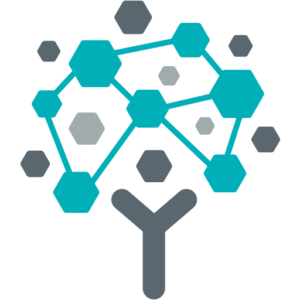Human resource professionals at nonprofits, schools and government organizations are constantly faced with one challenge after the next, and often are juggling full-time staff, part-time staff, and short-term grant-funded positions.
Using Technology to Improve HR Efficiency
When HR departments are spread thin, it can contribute to higher error rates on employee information, or worse, leave your organization vulnerable to fraud. Whether it is an overload of work, a lack of time or insufficient funding, it’s clear that nonprofit HR departments need more support.
The good news is there are HR software solutions that can help automate and streamline processes. It takes time to assess your organization’s needs and to research software on the market. It’s best to start with the basics. To help guide that decision-making process for you, below are some good basics to start you on your way.
1. Perform a Needs Analysis
One of the best practices when considering an integrated in-house HR system is to first perform a needs analysis. Gather your finance team together and talk about what your technology needs are, and what you need to improve and speed up your current HR processes.
By doing this, you will be able to understand what key factors will influence your purchase of a solution. You will also want to ensure that you evaluate different solutions and then determine which one will be the best fit for your organization. Compare what you have on your needs analysis with the features of the solutions you are considering.
2. Create a Budget
Set up a budget, seek out information on solutions, and meet with vendors to talk about your organization’s unique needs. Perform due diligence and evaluate potential return on investment opportunities. Keep in mind to ask about training, customer support, and long-term ability to add to the solution as your nonprofit or organization grows.
One of the challenges of implementing a new HR solution is to ensure your team can easily learn and use the system and the new system will be able to integrate all the HR data you’ve previously had in another program.
3. Consider the Software’s Fraud Prevention Ability
Another key question to ask of any potential solution vendor is how the HR solution prevents or reduces fraud. Does it have built-in features that enable you to know if there is duplicate employee information, for instance?
Can your system prevent ghost employees where employees on payroll are being paid but not really working at your company? Will your solution let you see someone who has few or no deductions from his or her pay? Does your system enable you to have a clear audit trail for any single employee? Can you schedule HR actions for future dates such as pay raises and review dates? The solution you choose should be able to account for all of these situations and provide peace of mind.
4. Look for Systems with Web Portals
Another benefit of an in-house HR solution is the ability to provide employees 24/7 access to benefits, payroll, and policies. Employees want ease of access to their time-off, medical claims, 401(k) information and insurance benefits information. Efficient and expedient access for employees reduces the time HR staff must spend on status updates needed by employees.
Having a user-intuitive and easily accessible HR information system ensures employee transparency and improved communication. Look for systems that have automation for employee benefits so you can automatically apply benefit calculations to all employees with one click.
Ensure that your system will significantly reduce hours spent on payroll processing or managing multiple Excel-based spreadsheets. As you streamline your HR department, it can reallocate that time to other pressing issues.
5. Embrace Automation
HR automation enables you to quickly download data and reporting for employees. Efficiently track employee records and data certifications, education, degrees and increase data integrity with a single-entry source for key personnel information. Additionally, HR professionals can see time-saving in reporting to auditors, grantors, and donors, and payroll and analytical reports can be pulled in minutes instead of hours.
Using a fund accounting software system reduces the time spent each month updating and transferring data between HR systems. It also ensures the more HR data you can merge, the better you are able to prepare for growth initiatives and measure your need each year for staff.
Even though selecting an HR solution may seem daunting, the long-term benefits for your organization are valuable. By investing in your nonprofit’s HR technology, your team is receiving the support it needs to keep things running smoothly at your organization—leaving more capacity to grow your mission.
Human resources professionals at nonprofits, schools, and government organizations dedicate their time to supporting employees and the mission. The impact of automation will be a long-term benefit to HR and employees. And human resources professionals will be able to spend more dedicated time on recruitment, workplace safety, employee relations, compensation planning, and training initiatives. That’s a bonus for all!
Request a demo to learn more about how your team can benefit from an integrated HR and payroll system today.
Share this post





